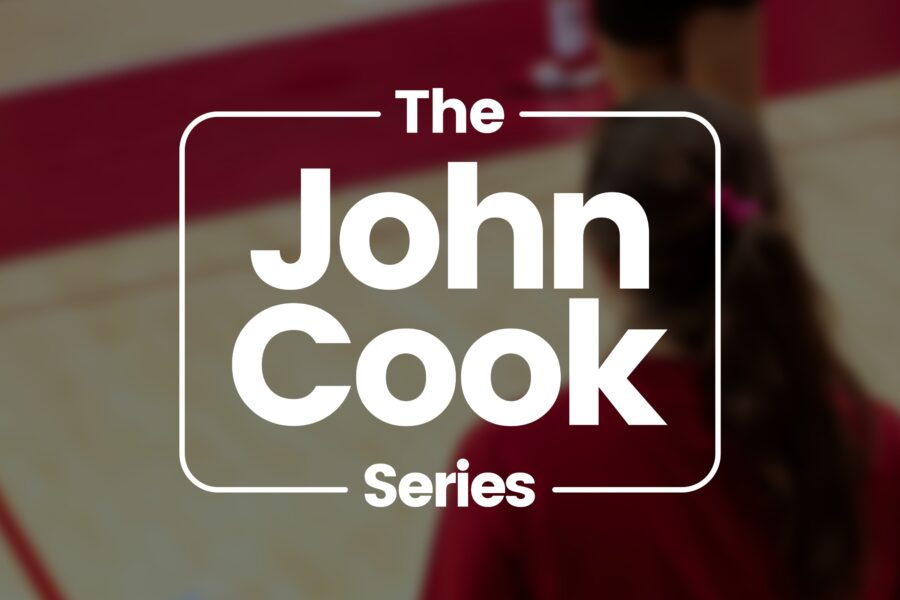John Cook: Why Video Matters in Volleyball

The modern athlete learns best from visual stimuli, and smart coaches like Cook are taking advantage. Check out the second of our three-part series with the Nebraska coach.
Adaptability is key to sustaining long-term success as a coach, a fact John Cook tapped into early on. His ability to alter his teaching style to connect with players has kept Nebraska at the top of the college volleyball rankings for much of the last 18 years, with four national championships and an average of 29.5 wins per season.
Cook realized this generation spends more time staring at a screen than any before it, causing the athletes, in general, to be visual learners. To effectively communicate with his players, Cook needed more visual stimuli, and video proved to be the perfect answer.
“Your generation, which we call generation Y or the millennials, as you have grown up, your listening skills have diminished but your visual skills are really good because you are so used to being on technology, iPhones, computers, etc.,” Cook said. “So video has become even more important.”
The Huskers utilize the visual element in several ways that keep their athletes interested and help them learn faster. In the second of our three-part series, Cook explains how Nebraska uses video to develop, scout and give life to data.
Development
Video has become the great teacher for Nebraska. The athletes are so well-versed in evaluating their play at this point that they often recognize their mistakes before a coach even brings it up.
“Our players are trained well enough that it’s almost a self autocorrect for them,” Cook said. “They know what they did wrong, we don’t even have to tell them.”
So critical is video to quick learning that Nebraska set up an instant replay system in practice. There is a wall by the court with two giant TV screens that are constantly displaying the previous play, allowing the staff to make immediate corrections and have the athletes physically see what the coaches mean.
Cook also shares video with players to watch on their own time and has the players come in a few times a week to meet with coaches and break down clips from practice and previous matches.
“It is immediate feedback, and I think that is very important in coaching to have that,” Cook said. “The longer I coach, the more important video has become.”
Scouting
Video allows Nebraska to peek into the future and get a read on what the upcoming opponent’s strategy will be. Cook is then able to craft a game plan and prepare his players for what they’re about to face.
This is particularly helpful when the Huskers are in a tournament or playing on back-to-back days. The video allows Cook to quickly dissect opponent tendencies and visually show his athletes what to expect and how they can attack.
“Whether we are playing Penn State, or Texas or Stanford, we use that video and it is broken down by the Volleymetrics system that is powered by Hudl,” Cook said. “We can break everything down to show what we want to show. So we try to get the main concepts of what do we have to do with our game plan to be successful to stop these guys and score against them.”
Reports
Cook and his staff have become proficient at sorting through video to pull out useful nuggets of information, but they get a hand from data. Nebraska leans heavily on the numbers to emphasize strengths and iron out any weaknesses.
“There is a saying in coaching that if you want it to be important you have to measure it,” Cook said. “So we use analytics to stat our players to know where they’re at, and for them to know where their performing and where our team is performing. We know the baseline that we need. We want to get our players above that baseline and our team above that baseline.”
What truly brings the reports to life is their connection to video. By simply selecting a stat, Cook can see a playlist filled with that number’s associated moments. He can look at individual player contributions or the performance of certain lineups with total ease.
“The bottom line is, with all that for our own players, it is an efficiency we are after,” he said. “We want them to be efficient. So we are measuring their good plays, their bad plays, and how efficient they are and we have different ways we measure that and evaluate it.”
For more insights from Coach Cook, including the past, present and future of volleyball, click here. If you want more great coaching resources, download our free eBook.
Also in this series:
The Past, Present and Future of Volleyball, According to John Cook

